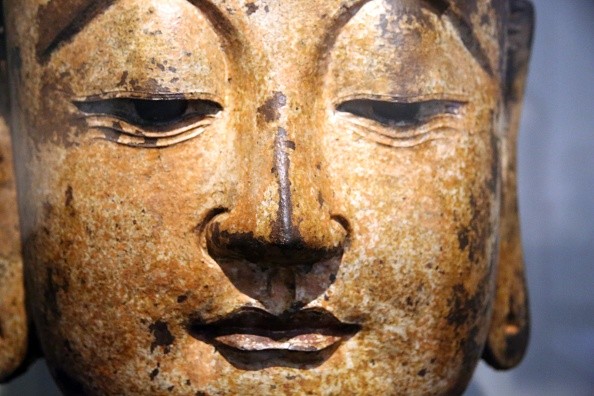A 12-foot-long Buddha statue was discovered by archaeologists after conducting an underwater expedition in Nangcheng County in Fuzhou City.
The head of the Buddha sticking out of the Hongmen Reservoir was first spotted by local villagers last month when a hydropower gate renovation project lowered water levels by more than 10 meters.
Judging from the head’s design, Xu Changqing, head of the provincial research institute of archaeology, said the statue was carved during the Ming Dynasty (1368-1644).
Under the State Administration of Cultural Heritage and Jiangxi Provincial Research Institute of Archaeology, the expedition started this month and was carried by the underwater cultural relic protection center.
They've discovered that in front of the statue is the foundation of the hall that covers 165 square meters.
There's also an inscription with 30 characters to the south, and a path to the north, according to Li Bin, researcher with the State Administration of Cultural Heritage.
“The ancient people built the statue to pray for safety,” said Guan Zhiyong, head of Hongmen Township government.
He added that the Buddha statue was built at the intersection of two rivers where boats easily overturned due to rapid flow.
The base is still covered with water, indicating that a temple existed there and it may have been protected by being underwater for many years.
Blacksmith Huang Keping, 82 years old, used to live near the site and confirmed the discovery.
“I went to the temple in 1952 and saw the Buddha statue for the first time. I remember the statue was gilded at that time,” said Huang.
Built in 1958, Hongmen Reservoir (also known as Zuixian Lake) is located on the ruins of the ancient Xiaoshi Township, an important hub for water transportation and trade center between Fujian and Jiangxi provinces.
Jin Huilin, curator of the Museum of Nancheng County, said, “The ruins of Xiaoshi town were not exposed by the lowered water levels, but the underwater team also explored the town.”
Archaeologists are planning a long-term reservation project to protect the ancient ruin.



























